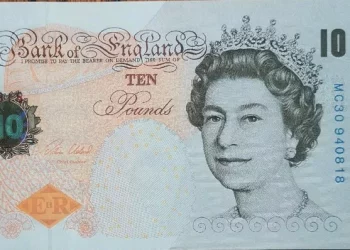The pound symbol is a widely recognized symbol used to denote currency and weight in the UK. It is a unique and distinct symbol that has an interesting design and history. In this article, we’ll explore what the pound symbol looks like, how it’s evolved over time, and its significance in the UK.
What does a Pound Symbol Look Like?
The pound symbol is represented by the “£” sign, which is a stylized “L” with a horizontal line through the middle. It’s commonly used to represent the British pound sterling currency and is also used as a symbol for weight measurement. The pound symbol is one of the most recognized symbols in the world, and its design has remained consistent over the years.
Evolution of the Pound Symbol
The pound symbol has a long and interesting history that dates back to the early days of the Roman Empire. In ancient Rome, the pound was used as a unit of weight, and the symbol for it was represented by the Latin word “libra,” which means balance or scales.
The symbol for the pound evolved over time and was influenced by different cultures and traditions. In the Middle Ages, merchants used a pound weight to measure their goods, and they would stamp their initials or a symbol onto the weight to show ownership. This practice eventually led to the use of the pound symbol to represent currency and weight measurement.
The earliest known use of the pound symbol dates back to the 14th century, where it was used to denote currency in English documents. At that time, the pound symbol looked different from what we see today. It was represented by a lowercase “L” with a line through the middle.
The modern design of the pound symbol that we know today was introduced in the 17th century. The symbol was now a stylized “L” with a horizontal line through the middle. This design has remained consistent to this day and is recognized worldwide as the symbol for the British pound sterling currency.
Significance of the Pound Symbol in the UK
The pound symbol, represented by the “£” sign, has a significant role in the UK and is used in various aspects of life. Here are some of the most prominent uses of the pound symbol in the UK:
- Currency
The pound symbol is used to represent the British pound sterling currency, which is the official currency of the UK. The pound sterling has a rich history that dates back to the Anglo-Saxon period and has been used in trade and commerce for centuries. It is one of the oldest and most widely traded currencies in the world, and its value is determined by the foreign exchange market.
The pound sterling is issued by the Bank of England and is used by individuals, businesses, and the government in the UK. It is also recognized and used as a reserve currency by other countries around the world.
- Measurement
The pound symbol is used as a symbol for weight measurement in the UK. The UK uses both the imperial and metric systems of measurement, and the pound symbol is used to represent both. In the imperial system, the pound symbol is used to denote weight, and it’s equivalent to 16 ounces. In the metric system, the pound symbol is used to represent the kilogram, which is equivalent to 2.20462 pounds.
The pound symbol is also used in other measurement systems, such as the troy weight system, which is used to measure precious metals like gold and silver. In this system, the pound symbol is used to represent the troy pound, which is equivalent to 12 troy ounces.
- Culture
The pound symbol has become a cultural icon in the UK and is often used in popular culture to represent the country or British culture. It’s frequently used in movies, TV shows, and music to denote the UK or to emphasize a British identity.
The pound symbol is also used in British landmarks and monuments, such as the Tower Bridge in London. It’s often displayed on souvenirs and merchandise that represent the UK, and it’s used as a symbol of pride and identity for many Britons.
- Politics
The pound symbol has played a significant role in UK politics, particularly in the context of Brexit. The UK’s decision to leave the European Union in 2016 had a significant impact on the pound sterling’s value, which fluctuated widely in the months and years following the referendum.
The pound symbol has also been used in political campaigns and slogans, such as “Keep the pound” in the 1990s, which aimed to prevent the UK from joining the euro currency.
Conclusion
The pound symbol is a unique and distinct symbol that has an interesting history and design. It has evolved over time and has become an essential part of the UK’s currency and measurement systems. The symbol’s consistency and recognition worldwide demonstrate its significance and importance in the UK’s culture and economy.
Related Topics:



























